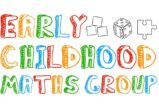Checklist
- Can children and families see maths in different parts of your setting?
- Are there mathematically-rich images?
- Is information about maths easily available for families?
- Are images and resources at appropriate heights for children and/or adults?
Maths everywhere
It is helpful if everyone can see familiar maths images and tools in the environment so they can refer to them daily. For example, clocks, scales, tape measures, pots labelled with the number of scissors, bead strings, dice, 100-squares, board games, playing cards and number tracks can support children’s learning in everyday experiences and in play. Large versions are especially engaging. With numerals and number ‘washing lines’, it is important to include zero for representing ‘none’ and for ordering numbers. Young children often enjoy exploring zero and find it intriguing.




Using labels
Using labels can be a great idea and these can be supported with sound buttons (30 second sound recorders) so the children can listen to what the label says.
Mathematical images
Mathematically rich images not only enhance the environment, but can engage children in deep mathematical wondering, especially with adults sparking discussion. Photographs of natural patterns, large crowds, tall buildings, maps, etc. can be changed regularly to stimulate discussion. These websites provide interesting images: Maths Eyes and Number Talk Images
Pattern images
Pattern images can prompt children to talk about shapes they notice being repeated, like the fern fronds getting smaller, or loops turning round in the mendhi pattern.



Long views
Long views can help children see how things look smaller in the distance

For families
Maths friendly spaces can be friendly for adults as well as children, expanding our ideas for developing children’s mathematical understanding. Displays for families and carers can help them to support their children in learning maths, especially if these are in a waiting area. These might include photos of children playing mathematically.
For examples, see our postcards for carers and families or our posters to support spatial thinking.
Children’s books
Selected children’s books with matching resources can encourage children to re-enact the mathematics in the story or use the props to count, represent and explain their ideas.



